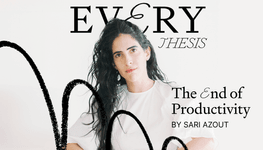
Saved by Liana and
The End of Productivity

Saved by Liana and
Imagine trying to shoehorn the elevator mirror solution into a Linear project. The software would prompt you to move through a neatly organized set of issues: “Research elevator speeds,” “Calculate upgrade costs,” “Implement faster motors.” There’s no task for “Stare at the wall and ponder human psychology,” but sometimes that’s exactly what we
... See moreThere are two modes of information discovery: foraging and hunting. Foraging is passive. You don’t have a clear goal; you just wander and scroll until something catches your interest. Hunting is active and purposeful. You know what you’re looking for and are consciously searching for it. A good information diet needs both: Foraging helps us decide
... See morenow that AI has given us the gift of semantic search—which surfaces information based on meaning and vibes rather than keywords—we no longer need to rely on rote categorization.